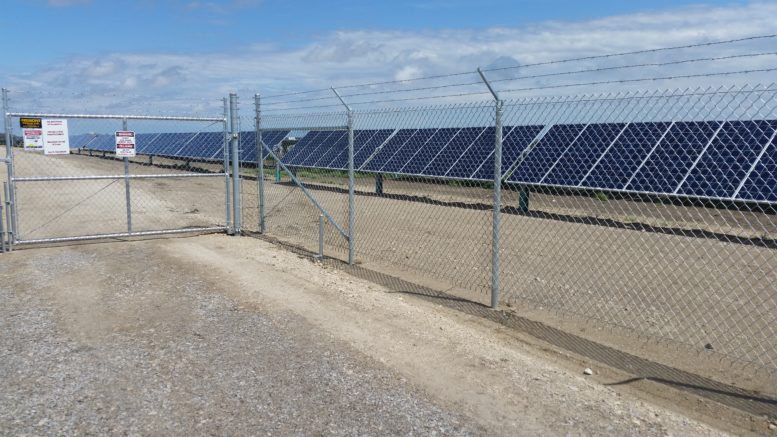By JAN LARSON McLAUGHLIN
BG Independent News
Efforts by State Senator Theresa Gavarone and others to balance the state’s energy legislation has put some green back into Ohio’s energy policy.
Substitute House Bill 6 still focuses on saving Ohio’s two nuclear power plants – but it also preserves some mandates for renewable energy.
“It’s going to really prevent cities from losing money on renewable energy,” Gavarone, R-Bowling Green, said on Wednesday night. “I’m pretty excited about this. This is important to Bowling Green.”
Bowling Green officials turned to Gavarone after feeling their concerns about green energy were ignored by State Rep. Haraz Ghanbari, R-Perrysburg. Ghanbari voted in favor of HB 6, which would bail out two nuclear plants, support to coal-fired plants (one in Indiana), and get rid of all mandates for the state to work toward renewable energy.
That hit Bowling Green hard, since the city has invested heavily in wind and solar power, and currently gets 40 percent of its power from renewable sources. City leaders consider green energy as the wise choice for Ohio’s future.
Estimates showed that Bowling Green could lose up to $400,000 a year by not being able to sell renewable energy credits to communities that needed to meet the state mandate.
“Things are going to be changed to benefit the city of Bowling Green,” Gavarone said.
However, it is unknown how much of a difference the new version of the bill will make.
Currently, Ohio requires utilities to increase their power generation from renewable sources – until they reach 12.5 percent by the end of 2026. After that date, that level must be maintained.
The HB 6 passed by the House, eliminated the green mandates altogether. The Senate version sets the green energy goal at 8.5 percent by 2025. After that date, the standards will cease to exist.
Gavarone also noted that the Senate version will require Davis-Besse to undergo a “rigorous, yearly auditing process.”
“The result of our work, in addition to protecting thousands of jobs in northern Ohio, encourages investment in all forms of renewable energy, provides enhanced accountability for taxpayer dollars, and maintains decreases of current energy prices for consumers,” Gavarone said.
On Thursday, Bowling Green Public Utilities Director Brian O’Connell was working his way through the Senate version of the bill.
“I can’t say for sure where we stand, but it’s better than the House version,” he said. “Theresa has done a nice job of listening to us and being responsive.”
Since the Senate substitute salvages some of the renewable portfolio standards, Bowling Green will be able to continue selling renewable energy credits – at least until 2026.
“We would still have a market, where we could see our renewable energy credits,” O’Connell said. “That would give us another five or six years to sell renewable energy credits.”
O’Connell said the Senate version responds to a variety of energy concerns – nuclear and coal for some areas, and wind and solar for cities like Bowling Green.
“We’ll be watching closely as this final version gets put together,” he said.



